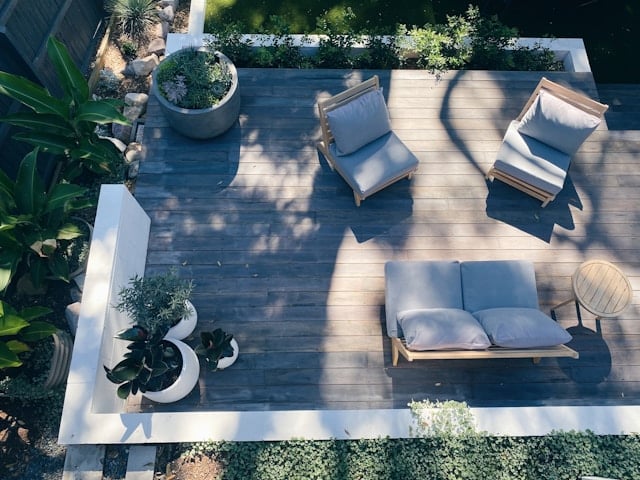How to Plan an Accessible Roof Deck for Social Gatherings in an Urban Environment?

When approaching the design of public spaces in an urban environment, you often face the daunting challenge of finding sufficient area to accomplish your vision. One innovative solution is literally above your head. Yes, you got it right – it’s the underutilized roof spaces. Urban roof areas, when properly designed and altered, can provide an excellent venue for social gatherings. They can serve as a haven of greenery and serenity in the midst of the bustling city. Yet, designing an accessible roof deck isn’t a piece of cake. In this article, we’ll guide you through the process, incorporating elements of design, accessibility, building codes, and sustainability.
Understanding the Basics: Green Roof Design Standards and Provisions
Before starting a project, you should familiarize yourselves with the basics. Green roof design standards and provisions are a fundamental aspect that you shouldn’t overlook. They provide a guideline on the minimum requirements for design, alteration, and maintenance of roof spaces. These provisions cover different aspects, such as load-bearing capacity, accessibility, drainage, and safety measures.
Dans le meme genre : How Can You Create an Energy-Efficient Cat Enclosure with Outdoor Access?
Furthermore, energy conservation standards may apply in some areas, promoting the use of green roofs to mitigate the effects of urban heat islands. Therefore, you should consult these guidelines to ensure your design is not only legal and safe but also environmentally friendly.
Creating Spaces for People: Pedestrian Accessibility in Rooftop Areas
Pedestrian accessibility is of paramount importance in designing urban roof decks. It dictates how easy or difficult it is for people to access and navigate the space. Pedestrian routes should be provided and clearly marked, with adequate lighting for evening use.
A découvrir également : What’s the Best Way to Retrofit an Old Fireplace with an Eco-Friendly Electric Insert?
Remember, not all of your guests will be fully mobile. You should therefore consider the needs of people with disabilities. Ramps and elevators should be provided where necessary, and handrails and other safety measures should be put in place.
Also, consider the user experience. Views, greenery, and seating areas can transform a pedestrian route from a simple means of access to an enjoyable journey.
Making the Most of the Space: Efficient Use of Roof Area
When designing for roof spaces, you might be working with a limited area. Efficient use of this space is key to creating a successful design. Optimizing the area involves careful planning and an innovative approach.
For instance, multi-functional furniture, such as benches with built-in storage, can save space. Vertical elements like green walls can also be used to create visual interest without taking up valuable floor space. Also, consider the use of retractable structures, like pergolas and awnings, which can provide shade or cover from the rain when needed but can also be tucked away to open up the space.
Integrating Greenery: Sustainable Building and Urban Roofs
Sustainable building and design have become essential considerations in today’s design and construction industry. When planning your rooftop social gathering area, incorporating greenery is not just a nice to have but a must-have.
Green roofs provide numerous benefits. Not only do they improve the aesthetic appeal of the area, but they also help to reduce the urban heat island effect, lower energy consumption, and improve air quality. A variety of plant types can be used, including grasses, shrubs, and even trees, depending on the load-bearing capacity of the roof.
It’s also important to consider the maintenance of these green features. They will need regular watering, and depending on the local climate, some plants may require special care during the winter months.
Services and Amenities: Making Your Roof Deck User-Friendly
Finally, to ensure your roof deck is user-friendly and comfortable for social gatherings, consider the services and amenities provided. Restroom facilities are a must, and they should be easily accessible from the roof area.
A kitchen or bar area can also be a great addition if you plan to host parties or events. Electrical outlets for music systems, lighting, and other electronics are another essential consideration. Finally, make sure there’s ample seating, and think about adding some cozy touches like fire pits or outdoor heaters for those chillier evenings.
Balancing Requirements: Complying with ADA Standards and Local Government Regulations
The design of an accessible roof deck is not only a creative process but also a legal one. Complying with the Americans with Disability Act (ADA) standards and local government regulations is crucial. According to Title III of the ADA, all "places of public accommodation" should be accessible to individuals with disabilities. This includes your rooftop area if it’s intended for social gatherings and is accessible to the public.
Your design must ensure an accessible route from parking spaces or public transportation stops to the roof deck. This might involve aligning with the existing building facility, or making alterations such as installing an elevator or a ramp. The ground floor should have an accessible entrance that leads to the roof deck, and all floors in between should comply with ADA requirements for accessibility.
The ADA also states that features of a facility that are used for a primary function must be fully accessible. This is a crucial point when you’re deciding where to place amenities like restrooms and food preparation areas. If they’re part of the primary function of the roof deck, they need to be accessible.
Meanwhile, local government regulations may have additional requirements. For instance, they might dictate the number of accessible parking spaces to provide or specify the width of the accessible paths of travel. It’s advisable to consult the local government’s building department to get accurate information.
Conclusion: Creating a Harmonious Blend of Green Spaces and Accessibility
In conclusion, planning an accessible roof deck for social gatherings in an urban environment is a complex task. It involves balancing functional requirements, ADA standards, and local government regulations with the aesthetic and environmental benefits of green roofs.
However, with thoughtful planning and design, it’s possible to transform an underutilized roof space into an accessible, sustainable oasis. The key is to consider accessibility and sustainability as not just requirements but also opportunities to enhance the user experience.
Firstly, incorporating ADA standards and local regulations into your design can make your roof deck more inclusive, ensuring it can be enjoyed by everyone, regardless of their mobility. Secondly, including green spaces in your design not only enhances its aesthetic appeal but also contributes to environmental sustainability.
Remember, each project is unique, and what works for one might not work for another. Therefore, flexibility and creativity should be your guiding principles. Whether you’re working with a large rooftop or a small one, a new construction or an old one, there’s always a way to make it accessible and green.
Your roof deck can become not just a social gathering place but also a symbol of inclusivity and sustainability in your urban environment. After all, good design is not just about aesthetics or functionality – it’s about making a positive impact on people’s lives and the world we live in.
